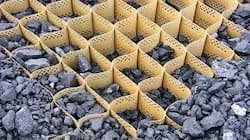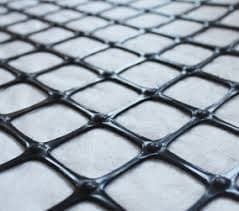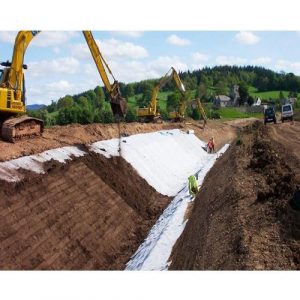Geocells and Geogrids, Performance and Comparison
The role of geosynthetics in the field of civil engineering is very vast and increasing by the day. The ease of use and installation combined with cost-efficiency and durability make geosynthetics a favored solution over traditional products. Geocells and Geogrids are two such products of enormous significance. While both Geocells and Geogrids are popular geosynthetic solutions for reinforcement and stabilization, they have their own distinct features and limitations. They are not interchangeable, and the type of project decides the kind of product. Let us explore geocells and geogrids, performance, and comparison.
There is an ever-increasing demand for both Geocells and Geogrids with the ongoing heavy investment in transport infrastructure globally. Ocean Geosynthetics is a pioneer in the manufacture of high-quality Geocells and Geogrids.
PC: Google
What are Geocells?
Structurally, these are three-dimensional, interconnected cells with the semblance of a honeycomb. The cells are often filled with materials such as soil, granular material, or concrete, depending on the project requirement. The filled geocells form a mattress and improve load-bearing capacity. Also known as Cellular Confinement Systems/structures (CSS), the geocells are made of high-density polyethylene (HDPE). The HDPE strips are welded at equal length intervals, and when pulled perpendicularly, they form the honeycomb pattern.
PC: Google
What are Geogrids?
As the name suggests, geogrids have a grid-like appearance. The process through which geogrids are manufactured could be woven, knitted, or thermally bonded. The coating could be either PVC or PE. Geogrids are two-dimensional. Geogrids based on structural design are uniaxial, biaxial, or even triaxial. All offer excellent resistance, flexural rigidity, good load bearing capacity, and excellent in-plane stiffness and aperture stability.
Comparison of the performance and limitations of Geocells and Geogrids:
Both cellular confinement systems and geogrids find utility in roads, pavements, and slope reinforcement. These geosynthetics have high strength, strong bearing capacity, are corrosion resistant, have an extended life, and offer ease of installation. Yet, they have certain distinguishing features that make one better than the other under different settings.
Physical Structure: Being three-dimensional, Cellular confinement systems interlock in a close-knit pattern, containing and confining any infill material very well and offer superior drainage and support. Geogrid, on the other hand, being two-dimensional, does not support the infill as well and provides lesser support, susceptible to erosion
Performance: Soft subgrades always are a challenge for any roadways or load-bearing surfaces. Cellular confinement systems, with their solid vertical support, are the chosen geosynthetics that offer rigidity to the soft subgrade and are also easier to install, saving time and money. Geogrids, with their flat and taut structure, perform less than well in areas with the soft subgrade.
Bearing capacity: The self-supporting element of cellular confinement systems with aggregate makes them an economical product of choice for high load-bearing. Geogrids might need more than a layer or even multiple layers to provide the requisite support for roadways.
From the points elaborated above, it is clear that Geocells outperform the geogrids. With their higher lateral confinement, reducing the thickness of the pavement, and with an assured performance, cellular confinement systems make for a more robust geosynthetic product that provides stability even over soft subgrades.
Reach out to Ocean Geosynthetics for engineering, environmental, and economically viable geosynthetic products and solutions. We offer unparalleled services at pocket-friendly prices for all your engineering needs.
Frequently Asked Questions (FAQ)
What is the typical thickness of Geocell panels?
The thickness of Geocell panels can vary depending on the application, but common thicknesses range from 50 mm to 200 mm.
Can Geocell be used in landfill applications?
Yes, Geocell is often used in landfill applications to provide stability and prevent soil erosion on slopes.
Does Geocell provide any sound insulation benefits?
Geocell can provide some sound insulation benefits due to its cellular structure, which helps in absorbing and dissipating sound waves.





